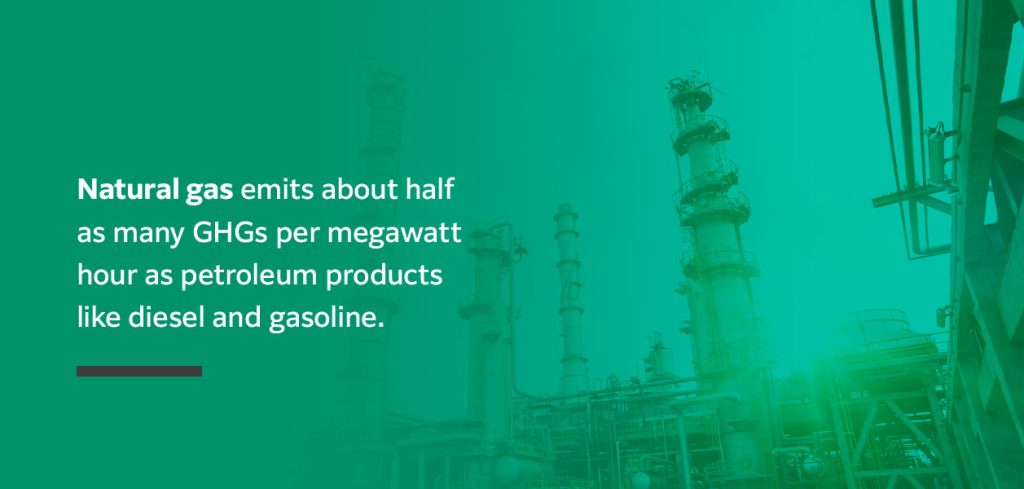
Jump to:
- Oil and Gas Industry Trends
- Oil and Gas Industry Technology Trends
- How FUJIFILM Apura™ Gas Separation Membrane Has Revolutionized the Oil and Gas Industry
The oil and gas industry has grown exponentially over the years. National regulations, international policies and programs, financial considerations, and technological developments have driven recent changes. Although mostly positive, some changes encourage companies to adopt practical solutions to help them stay competitive.
This guide assesses the latest innovations in the oil and gas industry from economic, financial, political and technological standpoints. The aim is to provide insights for operators, engineers and executives to tailor their strategies toward productive ends.
Oil and Gas Industry Trends
Here are four vital trends in the oil and gas industry:
1. Focus on Sustainability and Environmental Protection
Sustainability has become more important recently. Almost every industry implements strategies to reduce carbon dioxide (CO₂) emissions and eliminate other environmental hazards. The oil and gas sector is no exception. Although the industry is traditionally perceived as climate-threatening, some organizations have made great strides in developing sustainable solutions.
Rising competition for renewable energies and consumer expectations have forced the industry to find alternate oil exploration and production techniques. Additionally, regulatory demands require organizations to adopt sustainable practices to reduce greenhouse gas (GHG) emissions. For example, the Security and Exchange Commission (SEC) proposed mandating emission disclosures in company registration statements and periodic reports.
2. Resurgence in Natural Gas and Clean Energy Transition
Oil exploration can be challenging, requiring tremendous amounts of energy and resources. Sometimes, companies must burn fossil fuels for access. For these reasons, natural gas has become a more suitable alternative. Natural gas emits about half as many GHGs per megawatt hour as petroleum products like diesel and gasoline.

In 2022, the United States and Europe announced several policies to incentivize natural gas investment. The most significant is a joint statement from May 2022 between the United States and the European Commission on energy security, which aims to diversify imports of liquified natural gas (LNG) to Europe and reduce GHG from new infrastructure.
Another example is the Inflation Reduction Act, which included provisions to replace or repurpose energy infrastructure that isn’t working or isn’t efficient. The law also provides funds for reducing, avoiding or using GHGs and other air pollutants.
3. Increase in Strategic Investments and Resource Optimization
Companies in the oil and gas industry have encountered several financial challenges over the past few years. In particular, the shift towards renewable energy cost the industry significant revenue as investors turned their attention to other alternatives. However, investor interests have turned back with the discovery of new technologies, particularly in treating natural gas.
The demand for renewable energy and reduced operational emissions caused companies to create joint ventures and build firm environmental, social and governance (ESG) profiles. Although ESG initiatives have had a relatively slow start, professionals anticipate a steady rise over the coming years. Conversely, businesses invest heavily in technologies to reduce day-to-day operating expenditures (OPEX) and long-term capital expenditures (CAPEX). Increasing productivity while eliminating waste will enable companies to stay competitive.
4. Shortage in Skilled Labor
The skilled labor shortage trend is among the oldest in the oil and gas industry, but current phenomena are causing new waves. The rise of renewable energies has moved some workers into those spaces, whereas others are landing roles in lucrative, stable and sustainable fields like manufacturing and tech. Additionally, the fast pace of technology sometimes creates skill gaps, especially where companies fall behind in providing workers with adequate ongoing training.
Process automation has been one of the practical solutions, alongside the continued integration of ESG plans. Again, oil exploration and production companies invest in equipment and components that are easy to use and install. These strategies have been mostly beneficial, but executives are also advised to invest in education and training, promote industry awareness among potential recruits and consult hiring professionals where necessary.
Oil and Gas Industry Technology Trends
Industry 4.0 technologies have penetrated almost every industry worldwide, helping businesses cut costs, streamline operations and reduce carbon emissions. While numerous innovations exist in the oil and gas industry, five stand out. These are:
- Artificial intelligence (AI): Companies in the oil and gas industry leverage AI solutions to perform tasks such as demand forecasting, oil exploration, and oil spill and hydrocarbon detection and response. For example, AI can analyze vast datasets — including seismic surveys, satellite imagery, well logs and geological data — to identify patterns and anomalies and locate potential oil reservoirs. This analysis can save significant money and time.
- 3D and 4D modeling: 3D visualization models have been pivotal in seismic imaging, but exploration and production companies continue to experiment with integrating 4D models. 4D seismic imaging can help track changes in pressure, temperature, fluid movements and rock properties within reservoirs.
- Internet of Things (IoT): IoT continues to expand in this industry due to its numerous benefits, including real-time data collection, fault detection, remote monitoring and advanced analytics. These help reduce maintenance costs and enhance process visibility, ultimately increasing productivity and profitability.
- Robotics and automation: Robotics and process automation enable extensive inspections, maintenance, surveys and material handling. This improves safety and efficiency while reducing operational costs. It is estimated that robotics process automation could reduce the workforce in back-office processes by 25% to 35%, potentially reducing 30,000 work hours annually in supply chain tasks alone.
- Cloud computing: Companies in the oil and gas industry handle large volumes of sensitive data. Cloud computing helps store this information safely, allowing only authorized people access. The data can be retrieved and processed from any location, improving collaboration and convenience.
How FUJIFILM Apura™ Gas Separation Membrane Has Revolutionized the Oil and Gas Industry
As part of the efforts to reduce carbon footprints, cut costs and increase efficiency, businesses in the oil and gas industry are adopting alternate technologies across varying processes. One such innovation is the gas separation membrane, an advanced technique for amine treatment. This technology has grown rapidly due to:
- Increased demand: Demand for gas separation membranes is growing due to their multiple applications, including amine treatment, enhanced oil recovery and biogas purification.
- Ecological requirements: Unlike traditional techniques, which use chemicals to remove contaminants, gas separation membranes limit environmental concerns. No hazardous chemicals mean less worry about spillage, handling and disposal.
- Need for improved performance: Gas separation membranes are reliable, durable, safe, flexible and economical. They are easy to install, eliminating some of the industry’s labor and supply chain challenges.
FUJIFILM Apura™ gas separation membrane is designed to reduce CO₂ emissions. It replaces conventional gas separation and is used worldwide. It is effective for natural gas sweetening and the removal of fine acid. Apura™-FG also removes heavy hydrocarbon — ethanes — and bulk hydrogen sulfide (H₂S) in fuel gas conditioning processes.
Apura™ gas separation membrane requires less extensive pretreatment, offering a longer life span and reduction in OPEX and CAPEX. Apura™ is easier to install, operate and maintain than traditional amine gas processing methods. There are no moving parts, meaning you can save on repairs. Apura™ gas separation membrane also performs well against refrigeration for fuel and gas conditioning.
Choose Apura™ Gas Separation Membranes Today

Fujifilm has a strong background in organic chemistry and decades of experience providing practical solutions. Our proprietary Apura™ gas separation membrane can reach performance levels that conventional materials cannot achieve. It is sustainable, cost-effective, durable and easy to install. Contact us now to learn more!













